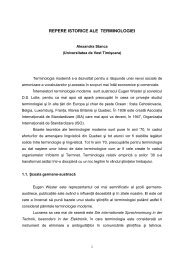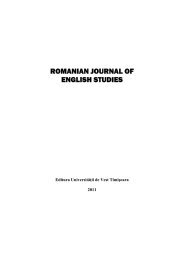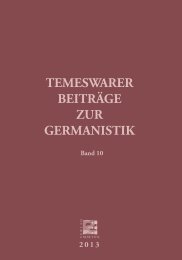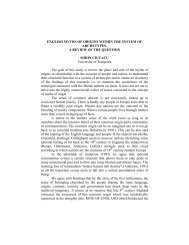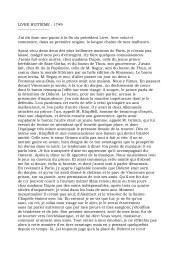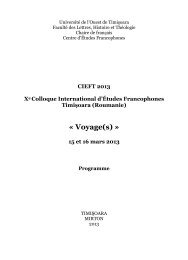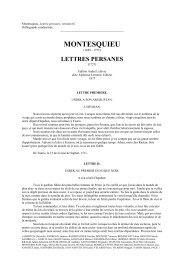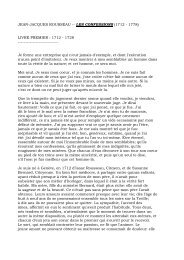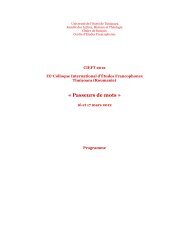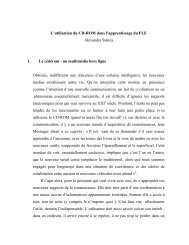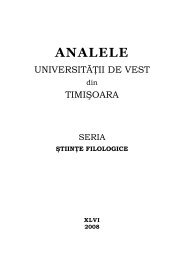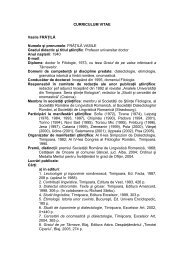TRANSLATION AND MEANING: A CULTURAL- COGNITIVE ...
TRANSLATION AND MEANING: A CULTURAL- COGNITIVE ...
TRANSLATION AND MEANING: A CULTURAL- COGNITIVE ...
You also want an ePaper? Increase the reach of your titles
YUMPU automatically turns print PDFs into web optimized ePapers that Google loves.
of adaptation, covering for instance operations like partial transcriptions of<br />
the original, omission or expansion, exoticising the source text, updating the<br />
information content of the original, creating a situational equivalence when<br />
the world referred to by the source text is entirely different from that of the<br />
adaptation, or even recreating the original, preserving only its essential<br />
message or function, or reproducing its impact (Bastin, 1998: 7).<br />
The balance between faithfulness and unfaithfulness is tasksensitive,<br />
a good adaptation reflecting some departure, but, in order to be<br />
accepted as translation of an original, also a significant dependence on the<br />
source text. The adapter is likely to be an intentional unreliable narrator, for<br />
s/he manipulates the target receptors, making them believe that the<br />
adaptation is a translation in the traditional sense of the world or, that may<br />
also be the case, that the target text is in fact his or her creation, an<br />
independent work.<br />
The source text is even more likely to fall in the background in the<br />
case of intersemiotic translations where a literary text may become a<br />
musical piece, accompanied by a verbal text or not, a ballet, a painting, or a<br />
filmic adaptation. The adapter may assert, in the form of the title, the<br />
dependence of his or her work on a pre-existent literary text, for instance. If<br />
the source is a classic, part of the literary cannon already, the receptors of<br />
the adaptation will approach it with some knowledge of the fictional world,<br />
and of the essential message or ideas of the source text, paired by certain<br />
expectations. The adaptation is judged accordingly, depending on the<br />
amount of referential information kept by the adapter and on the subjective<br />
reaction of the target audience towards the aesthetic means employed to<br />
replace the initial literary quality of the text, and to convey a similar<br />
richness of meaning as the well-known original. Here the unreliable<br />
translator can become manifest in appealing to the assumed knowledge of<br />
the original, reinforced by the presence of the same title for the adaptation,<br />
only to shatter the audience’s illusion of knowledge by presenting a new,<br />
inspired and/or inspirational interpretation of the original. The long, almost<br />
fossilised, line of interpretation that turned the literary text into a classic is<br />
disrupted, perhaps losing that part of the audience which is loyal to the<br />
traditional approaches, only to gain a different type of audience. This is the<br />
case with most of the adaptations departing from an original out of a strong<br />
desire to change not its position within the literary cannon, but rather the<br />
degree of force that it can still have in a continuously changing cultural<br />
polysystem by attracting new and larger audiences (Shenberg, 1997: 440).<br />
A contemporary translator or adapter is faced with an important<br />
problem when the literary text is a particularly resistant one in the cannon.<br />
Its position has been successively reinforced through series of



